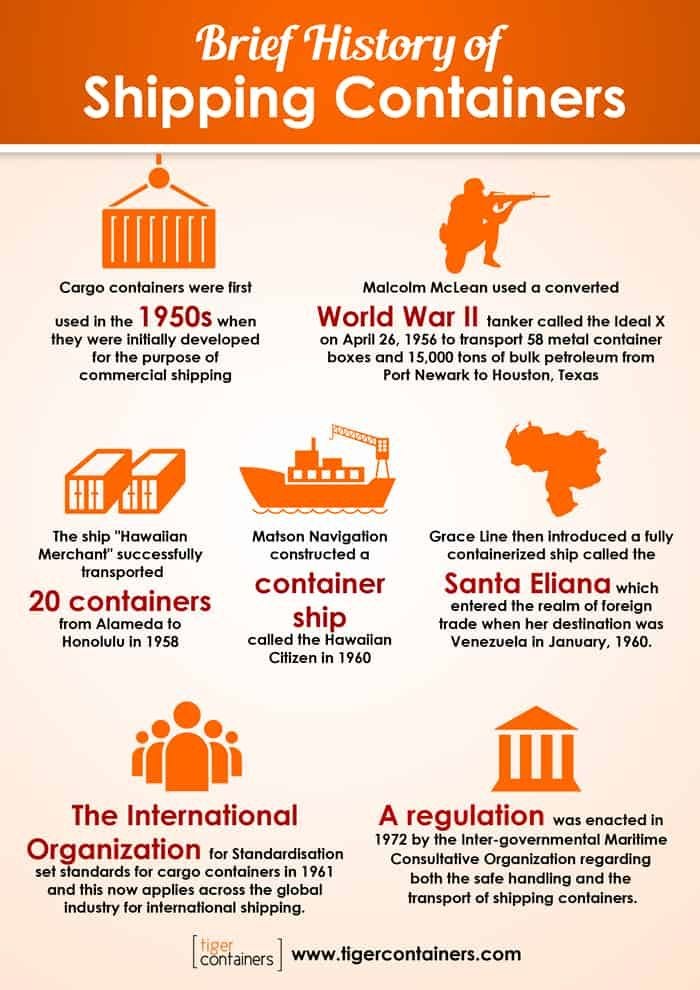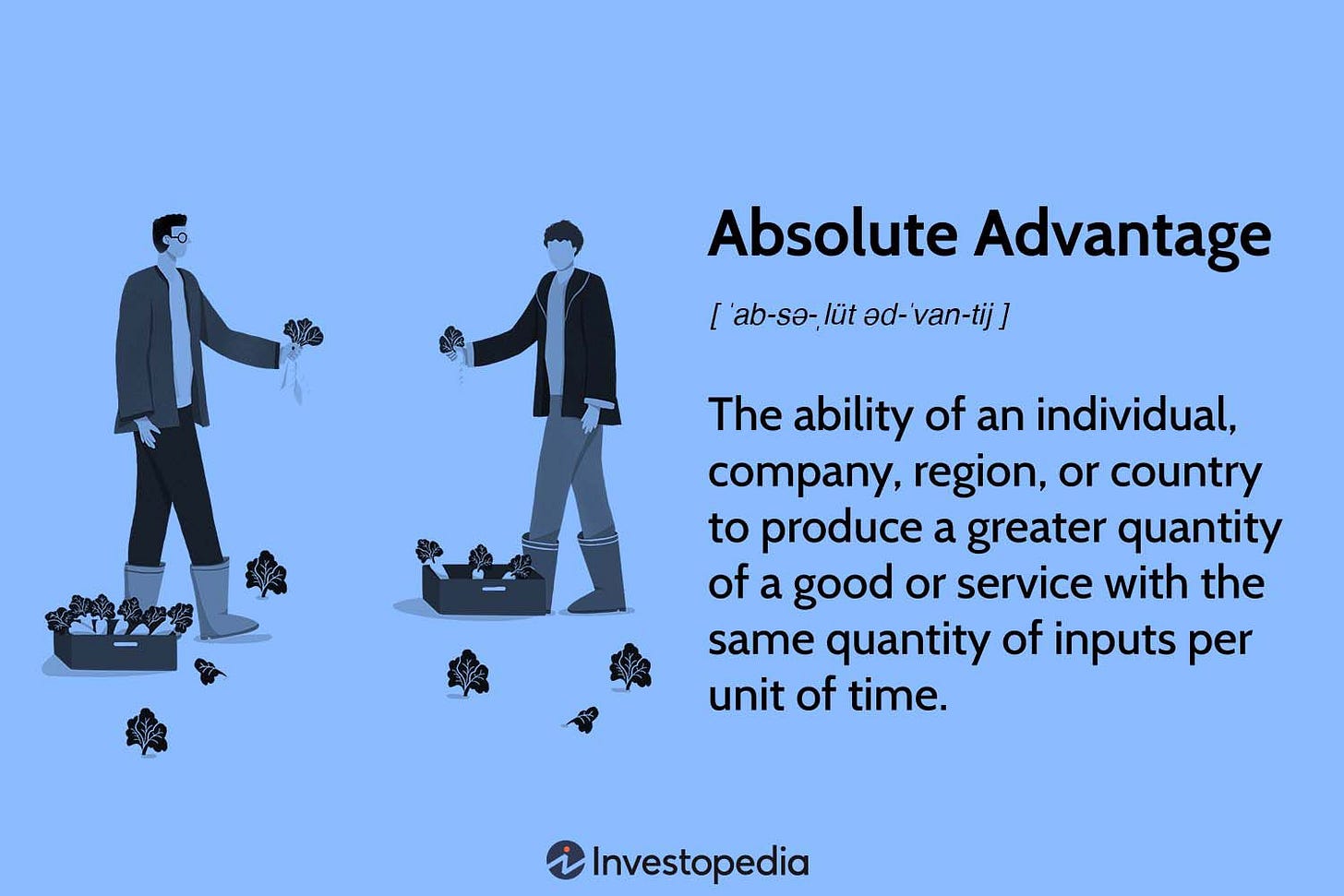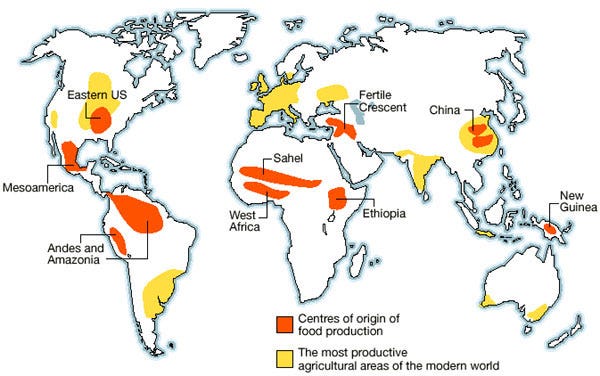Key Questions
What is the current state of globalization?
How did we get here?
Why should a nation participate in trade?
Will China remain the manufacturing hub of the world?
Topics Covered
Globalization
Freight Shipping
Why Trade?
Manufacturing Hubs
Globalization
Freight Shipping
So why are container ships so popular? It all comes down to cost, location, time sensitivity, and total volume/weight. Overseas trade obviously has to occur mostly by container ship. Trade over land can occur by many methods from rail to truck to cargo aboard domestic flights. The most economical option is definitely rail, but there are comparative benefits and disadvantages.
Autonomous Semi-Trailer Trucks
Currently semi-trailer trucks are quite costly relative to rail, but this may soon change with the increase in electric commercial vehicles such as the Tesla Semi. Tesla happens to have autonomous driving technology and the spillover into the commercial sector will eventually make cargo transportation an afterthought. Now despite this optimistic take, Tesla Semi is running into quite a few issues given it is the first prototype of an electric semi-truck. However, I am sure the kinks will slowly be ironed out and competitors will emerge.
We can see below that the market for cargo by rail and truck are decently interchangeable. As always, lowering the cost of transportation is a multiple fold benefit to the economy.
The Rail Industry & Future Concepts
The rail industry is a staple of many economies, but the centuries old industry is now dilapidated due to poor maintenance, antiquated infrastructure, and monopolization.
One important area that the US falls behind in is passenger rail. They do not have high speed commuter trains like Japan or the Eurozone. Moving people is just as important as cargo. Human capital and capital are both essential parts to an economy. High speed rail can lower costs increasing mobility for domestic travel over flights.
Many will hype up the concept of the “Hyperloop” and in theory this should be a better version of a train. However, in practice this may not be as efficient as traditional rail for a few reasons.
Why Trade?
Nations have different comparative advantages and this can be utilized to boost efficiency across the global economy. To understand how this works economically we must understand absolute vs comparative advantage.
Think of absolute advantage as a nation like China where labor used to be very cheap and the immense population serves to make producing large amounts of a good incredibly cheap.
On the other hand, think of comparative advantage as a specialized manufacturing within a nation. A great example is Taiwan which has a +50% dominance over semiconductor manufacturing. This is an extremely high end technology that other nations may not be able produce efficiently.
Now you may ask yourself, okay what if my nation does not have a vast working population or specialized in some high end manufacturing? Well there are other opportunities to make money such as arbitrage. In real life trade is not as simple as you make it cheap and we trade what I can make. There are a list of roadblocks involved from tariffs to regulations to market preferences. Many make money by exploiting this fact and the price differences caused by these market controls and discrepancies.
From both economic and geopolitical perspectives sometimes it is pragmatic to use market controls such as tariffs. Absolute advantage will eventually lead to trade deficits and this has carryover effects in the greater economy. Overall, trade is an incredibly complex thing that carries far more economic implications.
The direct channel would be something like DTC (direct to consumer) brands or farm to table restaurants/farmers markets. The other structures involve middlemen who will always take a cut, making a profit for themselves.
Manufacturing Hubs
So now that we know how and why people trade, how do these traded goods get produced in the first place? Why is it produced in these specific places to begin with? Once again, these are complex economic questions but generally involve factors such as availability of raw and/or rare materials, education level of laborers, and geographic positioning.
Over the past several decades we have seen a phenomenon of the “Four Asian Tigers.” (Hong Kong, Taiwan, Singapore, and South Korea) These nations went from essentially nothing to the technological and economic giants they are today. How did they get so insanely rich so fast? The answer is trade and export-led industrialization.
Hong Kong and Singapore are host to some of the biggest shipping routes in the world. The total amount of trade that occurs in their borders is multiples of their GDP.
Taiwan’s strategy was to go all in on semiconductor foundries. South Korea adopted a similar strategy going all in on technology and we see the modern titans that are Samsung, LG, Hyundai, and SK Telecom. These 2 nations account for about 70% of global semiconductor manufacturing volume. I will be covering these 2 countries and their opportune futures in future posts!
Japan, although not a “Asian Tiger,” also went through it’s own export-led industrialization. Similarly going all-in on technology, however they seem to have speedrun techno-capitalism and things are looking stagnant nowadays. I will be writing more about Japan in future posts so stay tuned!
In contrast, China is the obvious Asian economic giant, but they did not achieve their economic prosperity through the same means as the previous examples. The biggest strength for China was low cost laborers and this led to factories that produce just about any low to mid-range skill good.
The Double Edge
Just as manufacturing and trade can bring prosperity, it can do the exact opposite just as aggressively. Areas that used to once prosper from plentiful demand for their goods or resources are now desolate and abandoned. When the Ford factory moved out of Detroit the once beautiful city declined rapidly.
Agriculture Hubs
A lot of the food we consume nowadays comes from far away places. This is because food is resource intensive requiring large amounts of fertile land and raw resources such as water or fertilizer. Some places just have a huge comparative advantage for these specific things.
Personally I think shipping perishable items half way across the world is generally a waste of our resources. I do enjoy my occasional exotic tropical fruit, but maybe in the future it can be sourced locally; I am very excited about how technology could impact agriculture in the upcoming decades. I have seen examples of aquaponic (fish-hydroponic closed loop system) farms producing 30x more yield per acre, 90% less water, and zero-waste composting. If we are able to aggressively scale this technology there would be no need to import food for any nation. The greenhouse system utilized could essentially enable any crop to be cultivated across wider ranges of climates. I will talk more about this exciting prospect this fall where I address topics about modern cities, food supply, and everything else citizens need!
Global Supply Chains
In current times, semiconductor supply chains span the globe and are heavily reliant on China for end stage assembly. As we enter a new era of globalization we may see China lose this role. In the following Part II & III of this post I will be discussing the next leading contender for manufacturing, as well as explaining why China is losing its dominant manufacturing position.
Many may not realize that similarly complex global supply chains enable cheap food and clothing in Western countries.































